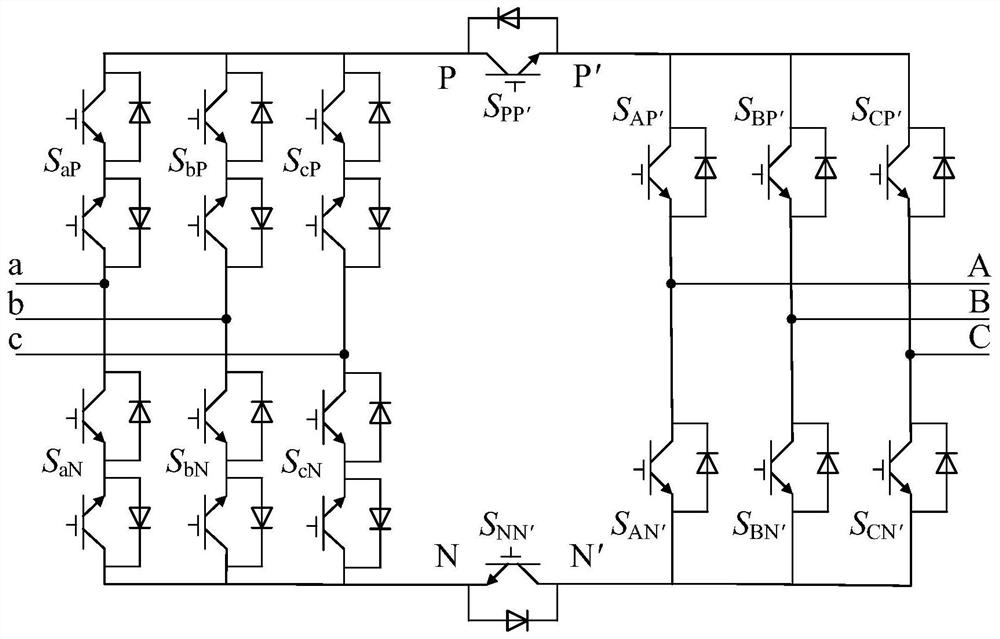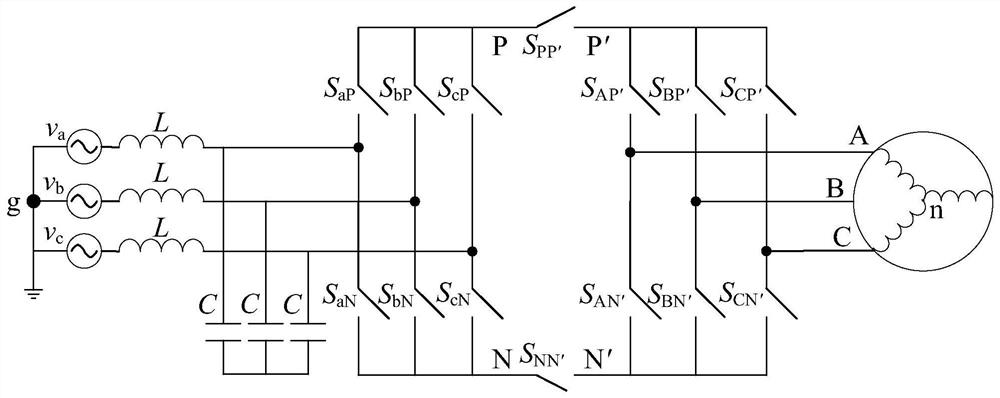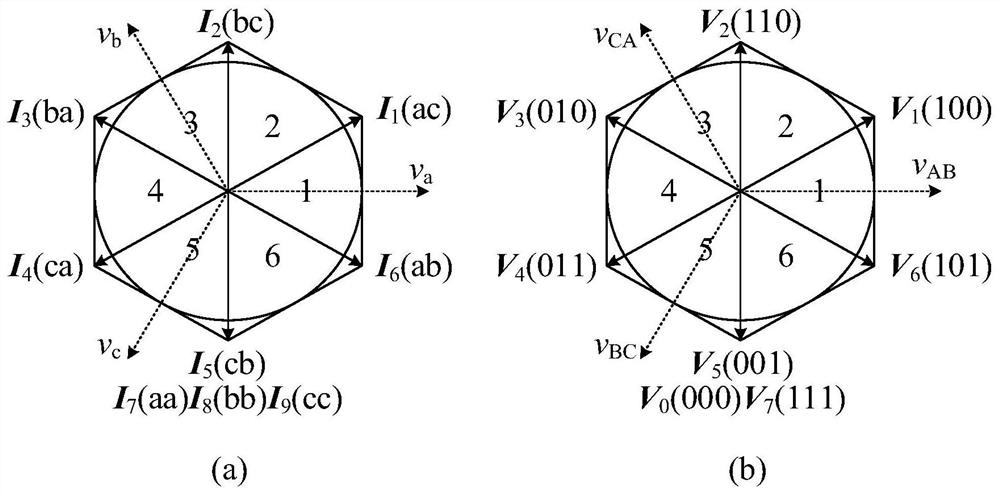A New Topology of Two-Stage Matrix Converter and Its Common-Mode Voltage Suppression Strategy
A matrix converter and topology technology, applied in the direction of AC power input conversion to AC power output, AC power input conversion to DC power output, electrical components, etc. System loss and other problems, to achieve the effect of maintaining the same input and output current quality, reducing the actual number of switching, and changing the distribution of switching loss
- Summary
- Abstract
- Description
- Claims
- Application Information
AI Technical Summary
Problems solved by technology
Method used
Image
Examples
Embodiment Construction
[0022] The present invention will be further described below in conjunction with accompanying drawing;
[0023] The new topology of a kind of two-stage matrix converter described in the present invention, as figure 1 As shown, the main circuit topology consists of three parts: rectifier stage, DC side and inverter stage. Among them, the three-phase input of the rectification stage is represented by a, b, and c. The rectification stage is a three-phase bridge circuit composed of six bidirectional switch units. Each bidirectional switch is connected in series by two unidirectional switch tubes of the common emitter stage. Formed, six bidirectional switch units with S ij (i=a, b, c; j=P, N) indicates that the input phase i is connected to the terminal j of the DC bus. A unidirectional switching tube is connected in series on the upper and lower DC busbars respectively, the emitter of the switching tube on the upper busbar is connected to the inverter stage, and the emitter of t...
PUM
 Login to View More
Login to View More Abstract
Description
Claims
Application Information
 Login to View More
Login to View More - R&D
- Intellectual Property
- Life Sciences
- Materials
- Tech Scout
- Unparalleled Data Quality
- Higher Quality Content
- 60% Fewer Hallucinations
Browse by: Latest US Patents, China's latest patents, Technical Efficacy Thesaurus, Application Domain, Technology Topic, Popular Technical Reports.
© 2025 PatSnap. All rights reserved.Legal|Privacy policy|Modern Slavery Act Transparency Statement|Sitemap|About US| Contact US: help@patsnap.com



